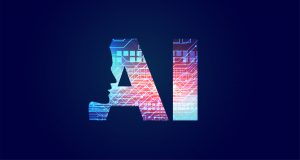What is Artificial intelligence?
Simply put Artificial intelligence (AI) is non biological intelligence. But what is ‘intelligence’? Well, there is no conclusive answer to the definition of ‘intelligence’ and over the years there is no agreement even among AI researchers on the definition of ‘intelligence’. To paint a broad picture, intelligence means the ability to solve complex problems.
Intelligence in reference to Artificial intelligence is divided into narrow intelligence and general intelligence. Artificial Narrow Intelligence (ANI) is the ability to solve a single or narrow range of tasks extremely well even better than human beings. IBM’s Deep Blue defeated Chess master Gary Kasparov in 1997 marking it the first machine to stand above humans at a specific task. But interestingly, Deep Blue could not even beat a teenager at tic-tac-toe.
Artificial General Intelligence (AGI) is machine intelligence equivalent to human intelligence. It is a panoply of human skills. As of 2021, we do not have AGI, and AI researchers and scientists are skeptical about its existence in the near decades to come considering the various complexities involved in the formation and development of AI. Considering, humans are attempting to build artificial intelligence that is similar, identical or advanced than human intelligence, but the complexity increases due to the incomplete understanding of the functioning of the homo sapiens itself.
An important aspect of AI is machine learning. Machine learning is a branch of artificial intelligence (AI) focused on building applications that learn from data and improve their accuracy over time without being programmed to do so. A few examples of machine learning software would be Apple’s Siri, Netflix’s watch recommendations, chatbots, self-driving cars, etc.

More on AI from our blogs can be found here.
What is Intellectual Property?
Intellectual property in simple terms is an intangible asset, a creation of mind which is unique and original to human intellect. Types of protection available to Intellectual property are Copyright, Trademark, Patent, Design, and Geographical Indication.
At the intersection:
Copyright protection subsists in any work the moment it is expressed in a tangible form. Copyright protection is for the expression of the idea and not the idea itself. A work must involve creativity and originality of a human being for the law to consider the work for copyright protection. The U.S. Copyright Office has succinctly stated that it will register a work of authorship only if the work is created by a human being.
The position held by U.S. Copyright Office does not address the present technological advancements considering that ANI is capable of producing music, literary pieces and video games on its own, through machine learning and can create literary pieces as good as Shakespeare.
Whereas India and United Kingdom have granted copyright to the person who causes the work to be created. The United Kingdom has granted rights over computer generated work to the programmer under Section 9(3) of the Copyright, Designs and Patents Act (CDPA), which states:
“In the case of a literary, dramatic, musical or artistic work which is computer-generated, the author shall be taken to be the person by whom the arrangements necessary for the creation of the work are undertaken.”
India, under Section 2(d) of the Copyright Act, 1957, states that copyright for a computer-generated work is granted to the person who causes the work to be created. The person causing the creation of the work could be the programmer who creates the computer software, or it could be the owner of the computer software.

Complexities arise while seeking copyright protection and determining ‘author’ of the work. ANI creates work based on the code (models + algorithms) created by the programmer and datasets fed to it. ANI can and has generated output/s that is unexplainable by the programmer. Then, how can copyright be granted to the author (programmer) when he/she is uncertain of the output generated? What would happen if the work generated is against the law, which was not the intention of the programmer? What will happen if the software is not owned by the programmer and the software generates unlawful content due to the faulty programming? We do not have an answer because we do not have any rules in India governing the functionality of ANI.
However, before we proceed to lay down the rules to examine ANI, it is crucial to delve into the technicalities involved in the examination of ANI from a computer science perspective. It is difficult to draw legal boundaries on ANI without understanding its abilities and functions.
In the second part of this article, I will discuss the yardsticks adopted to determine intelligence in ANI/AI, hurdles faced in the examination of ANI/AI, and the myriad roles ANI can adopt, all collectively required to unearth a viable solution for placing legal accountability on the usage and adoption of ANI. Please find the second part of this article here.
This article has been authored by Abhishek R.
Editorial Staff
Editorial Staff at Selvam and Selvam is a team of Lawyers, Interns and Staff with expertise in Intellectual Property Rights led by Raja Selvam.
The much needed check: An order of the Delhi High Court
In a welcome move, the Delhi High Court ordered that trademark applications' whose opposition period would have expired during the suspension period…
University Patents – Can your project work be patented?
There’s a rather common meme that was doing the rounds on social media which stated that “India is a country where we first become an “Engineer” and…
